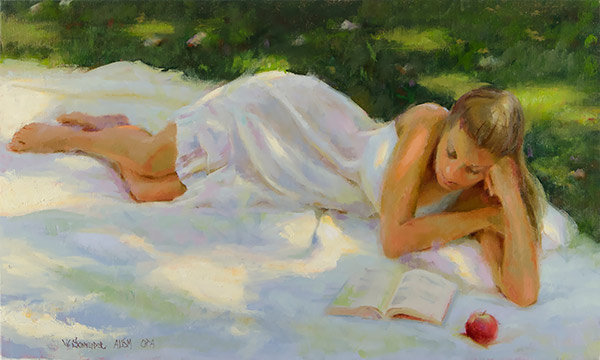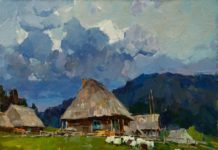William Schneider has painted demos from the stage at past Plein Air Convention & Expos, but helping people one-on-one suits him just as well. That’s one of the reasons the Illinois artist is looking forward to being a field instructor at PACE 2017.
Schneider acknowledges that you can reach more people from a stage, but the presenter is likely to stick to broad statements and basic principles. Mentoring one-on-one, an instructor can illustrate relevant points right on the canvas, helping the developing painter understand what could and perhaps should happen in his or her piece.
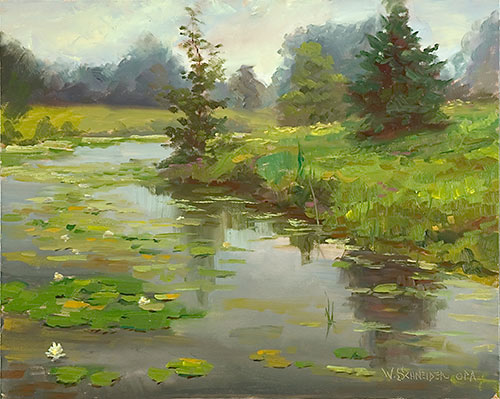
“Thinking of Monet,” by William Schneider, oil, 16 x 20 in.
“You can offer specific suggestions that address an individual’s work in progress, and their location in their artistic development,” Schneider points out. “The danger can be that you put out the fire but don’t explain the concept. So when I do one-on-one coaching, I try to make sure I tie it back to a broader concept. Instead of simply saying, ‘The shadow on this one tree looks awfully dark,’ I say, ‘Pay attention to your light key. There can’t be a stronger shadow on one tree.’”
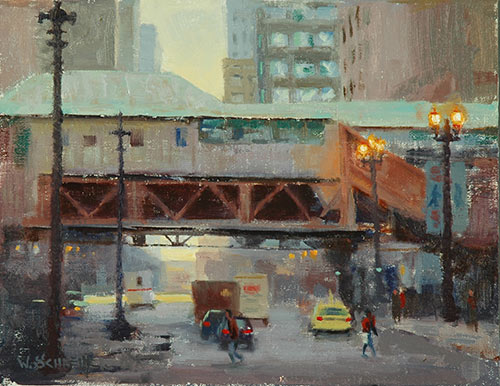
“LaSalle Street El,” by William Schneider, oil, 9 x 12 in.
It’s not that Schneider doesn’t like painting in front of a crowd. “I do lots of demos at various conferences and workshops, and I enjoy them,” he says. “Many artists have trouble painting and talking, but for better or worse, I have both halves of my brain working at the same time when I am painting. Perhaps the benefit for the individual participant is greater with the one-on-one coaching. Someone is making that translation for them in regard to the general concepts communicated and what is happening on their surface.”
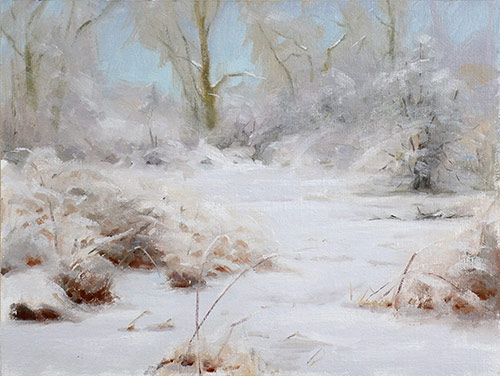
“Winter Wonderland,” by William Schneider, oil, 12 x 16 in.
But again, it’s hard to be a good mentor. “You can forget what it’s like to not be proficient,” Schneider points out. “Some artists absorbed design principles simply by seeing good art all their life, so because the knowledge is subconscious rather than conscious, they can’t communicate the principle. But I went back to art school late. I was very conscious of what I was trying to learn, and I was making modules of the different things you need to learn to become a better artist.”
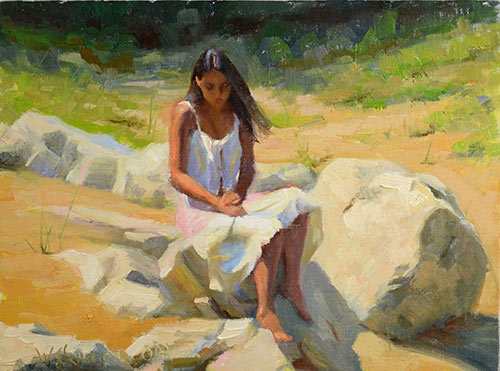
“Sunny Day,” by William Schneider, oil, 12 x 16 in.
Schneider is a veteran of trade shows, but PACE is one place he makes a point of being. “I was very impressed with the convention last year. I like art conventions — I’ve done a number of them, all good —but PACE last year was just jam-packed, to the point where it could be exhausting —from 6 a.m. to bedtime, every minute was filled with something. The art world is small compared to other worlds, so to see people who you know from books or the Internet is great. There’s something for everybody; there’s networking for advanced professionals and everyone else. PACE more than held its own against the best business conventions I’ve attended, and offered much more than anyone would expect in an art convention.”
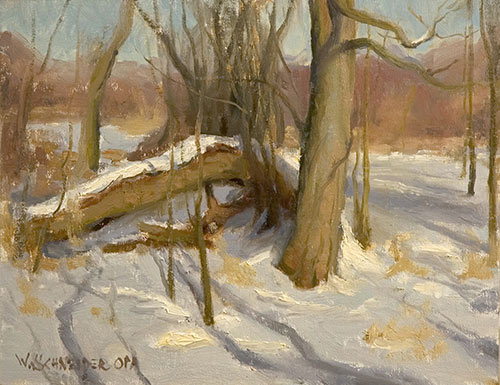
“January Sunshine,” by William Schneider, 11 x 14 in.
If you missed out on this year’s event, don’t make the same mistake twice. Check out the website for PACE 2017, in San Diego, California. It’s filling up fast already.

